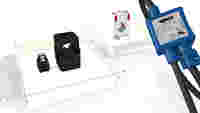Relays with Ex Approval
Safe and flexible: Relays from WAGO are suitable for use in Zone 2 explosive atmospheres and thus cover a wide range of applications.
Hazardous Areas
Potentially explosive areas arise in various applications including the chemical industry, during the production of crude oil or natural gas or in the food industry facilities. These are divided into Zones 0, 1 and 2 according to the frequency and duration of occurrence of potentially explosive atmospheres. Relays from WAGO are suitable for use in Zone 2 explosive atmospheres.
Identifying devices that may be used in hazardous areas is mandatory.
In order to reduce costs but still be able to install the products in the Ex area, facility operators try to use devices with Zone 2 approval.
A type examination certificate or manufacturer’s declaration is required for use in potentially explosive areas. You can download these from the eShop and add them to your system documentation.
Zone 2
Area in which it is not anticipated during normal operation that a potentially explosive atmosphere will occur as a mixture of flammable materials in the form of gas, vapor or mist with air. If one does occur, then it occurs only momentarily.










